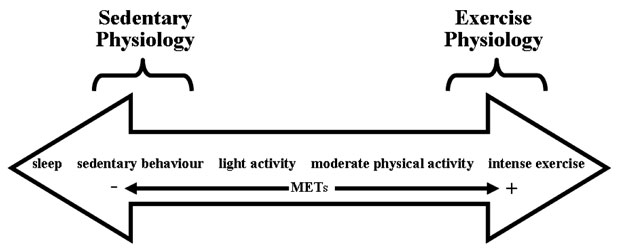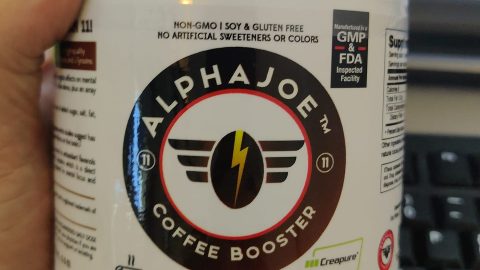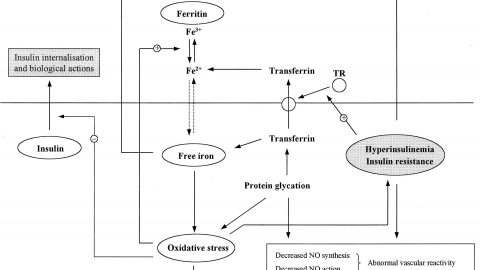Readers note 2009: Since “andro” supplements, pro hormones, and most “designer supplements” are banned since this article was written, much of the info is moot at this point. Regardless, it’s a good article to see how much things have changed since it was published, and it goes in the “oldie but good” file. 😉
The End Of Andro Supplements?
It was only a few years ago that androstenedione exploded onto the bodybuilding scene touted as the greatest thing since the invention of the squat rack for building muscles. For a while, androstenedione was bodybuilding’s little secret as the outside world was oblivious to the fact that people all over the country were popping this testosterone precursor like candy in hopes it would increase their muscle mass. That all changed with the Mark McGwire fiasco and now “andro” has become virtually a household name. Then came the mother of all anti-andro sound bites for the media, a major study published in the Journal of the American Medical Association (King DS, Sharp RL, Vukovich MD, et al. Effect of oral androstenedione on serum testosterone and adaptations to resistance training in young men. JAMA. 1999;281:2020-2028) that painted a very negative picture of androstenedione. The media then compared “andro” to those evil steroids on the ten o’clock news in their standard “don’t confuse us with the facts” style of journalism. Of course androstenedione’s Achilles heel has been the fact that so little research existed, no one could say either way what it did exactly or if it had any health risks associated with its long term use. Research is a slow and expensive endeavor and many mistakes can be made along the way. In 1998 and 99, several studies were conducted on the andro products to see what, if any, claims held up. Though we now appear to have limited research on some of the andro products, in particular androstenedione, we are nowhere near answering the long list of questions we have on this compound and much of the research done to date has minimal if any usefulness in the real world. This article attempts to take a look at the research to date and hopefully clear up some of the crazy claims being made by both the pro and anti-andro camps.
A Mish Mash of andro studies…
What we have to date regarding modern research on androstenedione in healthy exercising people is a mish-mash of information that looked mostly at the effects of androstenedione on raising testosterone levels, with one exception, which we will look at shortly. One of the most promising small clinical studies was done by Tim Ziegenfuss Ph.D. at Eastern Michigan University in 1998. He took a small group of healthy young men and gave them either 100mg of androstenedione, 100mg of androstenediol, or placebo orally. He took their blood at 30 minutes, 60 minutes, and 90 minutes out and checked their testosterone levels. What he found was at 90 minutes out, the group getting the androstenediol had on average a 47.7% increase in testosterone and the androstenedione group had only a 10% rise in testosterone. He presented his findings at the International Weightlifting Conference in Lahti, Finland in Novemeber 98. Now remember, this was a very short term clinical study that looked at acute rises in testosterone. He didn’t look at anything else, such as estrogen, changes in bodyfat or muscle, etc., nor would he be expected to really. This study got a lot people excited that these andro product might really work as claimed.
Another recent study published as an abstract Called “Oral 4-Androstene-3,17-dione and 4-Androstene-3,17-diol Supplementation in Young Males” (J.Parenteral and Ent. Nutri. 23(1): Suppl. S16. 1999.) was done by a Dr. Earnest and co workers at East Tennessee State University. The small study, using eight men receiving either 200mg dione or 200mg diol in capsule form, showed some interesting results. They checked the blood testosterone levels of the young men at 30, 60, 90, and 120 minutes out from the ingestion of the andro products. They also found both the androstenedione and the androstenediol raised both total testosterone (TT) and free testosterone (FT) though they found neither had as dramatic an effect on testosterone as the small study reported by Dr. Ziegenfuss. More interesting perhaps, the study by Dr. Earnest found androstenedione actually was better for increasing TT and FT than androstenediol, which goes against what most people feel should happen as it’s commonly understood the “diol” version should be a better converter than the “dione” version. It’s important to remember these studies were short in duration, small, and only looked at testosterone levels up to 120 minutes after ingestion, though it appears they show androstenedione does have some effect on testosterone levels for a short time. On a more negative note, a recent study presented by a Dr. Bizeau and Hazel at the 1999 conference of the Federation of American Societies for Experimental Biology (J. of FASEB, Vol. 13:4, 1999.) concluded 100mg of androstenedione given orally to six men for five days had no effects on testosterone, increased estrogen (estradiol), and decreased protein synthesis! Ouch!
Finally, a study presented at the 1999 Annual Meeting of the Endocrine Society called “Changes in Serum Sex Steroid Concentrations Following Oral Administration of Androstenedione (A4)” done by a Dr. Spratt and coworkers came to a rather neutral finding on androstenedione. This small study, done by these scientists at the Main Medical Research Institute in Portland Main, looked at several hormonal markers such as estrogens (estrone and estradiol), luteinizing hormone (LH) and of course testosterone (T) . They gave 6 healthy men 100mg and 200mg of androstenedione for two seven day periods. For both dosing periods, they checked the blood T, LH, and estrogens at 30, 60, 120, and 240 minutes after the andro dose. What they found was androstenedione at either a 100mg or 200mg dose had no effect on T, LH, or estrogens and concluded “Thus, it is unlikely that these doses of A4 (androstenedione) have significant anabolic or other clinical effects.”
The mother of all anti andro studies…
As the reader can see, what we have so far is a handful of small studies with a variety of problems, done for a short duration of time, with conclusions that range from positive to negative to neutral regarding the effects of androstenedione. None of them looked at lean body mass (LBM) or fat mass (FM) changes or even changes in strength of the users. Now along comes this big study in JAMA that the media jumped all over as proof that androstenedione is the worst thing for weight lifters since the invention of step aerobics. It was larger than any of the other studies, did check for changes in LBM, FT, strength, and hormonal levels and was published in what is considered a very distinguished journal. In a nut shell, the JAMA study basically concludes that androstenedione does not raise T, does not increase LBM or decrease FM, and increases estrogens and lowers HDL (the “good” Cholesterol) levels. Bummer. So is this the slam dunk the anti-andro camp were hoping for? No. If one looks closely at this study, one will find it was so full of problems and strange conclusions that it is of virtually no use in answering the many questions we have about androstenedione. Now, what follows is a detailed breakdown of the study and its potential problems and is for the more scientific minded. If you don’t want to deal with the techno babble, feel free to jump to the conclusion which pretty much sums it all up in plain English, though you would be missing some interesting info by skipping over it.
Comments and questions on the JAMA study.
Throughout the study, references are made to anabolic steroids and their effects on the body. Why? Synthetic anabolic steroids (AAS) are not naturally occurring in the human body unlike androstenedione, DHEA, and other metabolites. It would have been more relevant and accurate to compare androstenedione to naturally occurring metabolites such as DHEA, which like androstenedione have very little androgenic activity on their own. The comparison made to AAS is all the more surprising since this study concludes that androstenedione is ineffective in raising levels of testosterone. Furthermore, AAS are most often found in supraphysiologic concentrations when used by athletes and can have different physiological effects than normal to high normal levels of testosterone. Of course, it depends on the AAS in question. High normal levels of testosterone have never been shown to have negative effects in healthy young men and the side effects of AAS have been greatly overstated (For a recent review see: Street. C., Antonio A., and Cudlipp, D. “Androgen Use by Athletes: A Reevaluation of the Health Risks.” Can. J. Appl. Phys. 21(6): 421-440. 1996). For example, the study states that increased concentrations of testosterone in the blood have been associated with increased cardiovascular risk due to decreased HDL and increased LDL but it references studies that looked at supraphysiologic levels of AAS, not physiological levels as seen with testosterone replacement. This leaves the reader assuming that normal to high normal levels of testosterone cause heart disease while the overwhelming majority of the literature shows just the opposite (See: Phillips, GB, Pinckernell BH, Jing TY. The association of hypotestosteronemia with coronary artery disease in men. Arterioscler Thromb. 1994;42:116-20.). Androstenedione is not shown to produce testosterone levels exceeding the high end of the normal range, and normal to high normal levels of testosterone have never been shown to cause health problems in healthy men (See: Tenover, J. Testosterone and the aging male. J Andrology 1997;18:103-06.). Some recent research suggests that injections of moderately high doses of testosterone have no ill effects on the blood chemistry or health of young men (see: Shalender., B. et. al., “The Effects Of Supraphysiologic Doses Of Testosterone On Muscle Size And Strength In Normal Men.” NEJM, vol.336, 1996). Therefore it seems an unwarranted assumption that androstenedione would necessarily pose a health risk if it indeed produces a small acute increase in testosterone levels, and it seems unwarranted to use data concerning health risks arising from abuse of anabolic steroids as evidence for health risks from androstenedione use. Bottom line? There is much discussion in the JAMA study about potential adverse health effects of androstenedione, but the study provides no evidence of an such effects actually occurring. Unfortunately, speculations (and that’s what they are) concerning adverse health effects are already being cited in the popular press as new and actual evidence that androstenedione poses a health risk.
The study used men who had never lifted weights! Why were untrained men chosen for the study? That none of them were strength-trained athletes could have masked any small strength gains imparted by the androstenedione if there were any benefits to be had. People who embark on a strength training program for the first time, as the JAMA study discovered, increase strength and LBM while losing bodyfat at a rapid rate even without any supplementation. And some of them achieve much larger increases in strength or size than others. This confounds the statistics and may make it impossible to tell whether one group really did do better than the other or not. Subjects who had achieved a steady-state response to their training, who would not have made substantial gains with placebo, and and would not vary greatly in their gains, would have been much more suitable for the study. Small differences could then be detected between the supplement and placebo groups that could be of great athletic relevance yet not apparent when using untrained individuals as subjects. And really, who cares what andro does for non-athletes anyway?
Why were men with such a high body fat percentage chosen? The subjects in this study were approximately 23% bodyfat! It’s well known that high bodyfat percentage increases estrogen production (see: Enhanced conversion of androstenedione to estrogens in obese males. J Clin Endocrinol Metab. Nov;51(5):1128-32. 1980, and The relationship between aromatase activity and body fat distribution. Steroids. Jul-Sep;50(1-3):61-72. 1987, and Adipose tissue as a source of hormones. Am J Clin Nutr. Jan;45(1 Suppl):277-82. 1987. Review.). The unusually high estrogen levels seen at base line with the study participants would seem in accord with that. The study stated the participants were not “abusing alcohol.” What was the cut off for alcohol intake? Even small amounts of alcohol in men with high bodyfat levels will raise estrogen production. Again, the subjects are not representative of athletic users.
Why was so much emphasis placed on the results from the chronic study (that testosterone levels did not remain elevated after an overnight fast), when so far as we know, no one would have expected that testosterone levels would remain elevated overnight? No such effect is currently being claimed for the product to our knowledge. We do not see how the conclusion can be justified that androstenedione does not affect testosterone levels, as a broad sweeping statement, when the evidence from which this is drawn is simply that levels are unchanged after an overnight fast – particularly when evidence was obtained that seems to show increase acute levels for several hours after ingestion of the supplement even if not deemed statistically significant.
Why were several positive observed results in the androstenedione group not discussed? It seems of interest that LH and FSH levels were not suppressed, a potential side effect that has concerned many. The study says there was no differences found in bodyfat between groups yet an average 1.4 kg greater fat loss (175%) in the andro group was found! Androstenedione as a fat loss agent? It is difficult to understand why a large amount of text was devoted to what appears to be speculation concerning possible health risks, without supporting observational data, while observed positive results received little or no attention in the text. This seems rather biased to us.
Finally, the study mentions that daily protein intake was from 85 to 98 grams daily which exceeded recommended daily allowance. Even though all groups in the study increased LBM and decreased FM, this does not exceed recommended allowance for protein intakes in weight trained athletes and in fact indicates protein deficient diet in our view (see: Lemon, PW, “Is increased dietary protein necessary or beneficial for individuals with a physically active life style?” Nutr. Rev. 54:S169-175, 1996, and Lemon, PW, “Do athletes need more dietary protein and amino acids?” International J. Sports Nutri. S39-61, 1995, and Tarnopolsky, MA, “Evaluation of protein requirements for trained strength athletes.” J. Applied. Phys. 73(5):1986-1995, 1992). The common myth and misconception that people engaged in weight training do not need additional protein has been put to rest repeatedly but old views change slowly (even in the face of current research).
The bottom line…
So what’s the bottom line on this study? Was it a slam dunk against andro? Not at all. The study used fat guys who never lifted a weight in their life who in fact started out with high estrogen levels and amazingly enough (we are being facetious here if you can’t tell) concluded androstenedione increased estrogen! Now the reader should be very clear that we are not particularly impressed with oral androstenedione per se, but feel strongly that a double standard exists for nutritional supplements. What bothers us most perhaps is much of the evidence presented in the JAMA study does not support the published conclusions, and twists the fact that they were unable to prove absolutely for sure that androstenedione raises testosterone and turned it into a conclusion that it actually does not raise testosterone. Even though their own graphs show an increase! We all know that androstenedione is nothing great and other compounds such as 4-androstenediol are probably a better bet for raising T and some of the “nor” products may also have their uses. Future research needs to be done to confirm it however. Also, other delivery technologies such as topical, cyclodextrins, and certain time release formulas, might improve the effects of the above andro products.
Though it’s perfectly possible androstenedione won’t turn out to be the wonder supplement some companies make it out to be, as many of us have always suspected. Regardless, much of this seems rather reminiscent of the days when it was published repeatedly in scientific journals that anabolic steroids had no effect in improving athletic performance, and we all know that turned out to be true!
Will Brink is the owner of the Brinkzone Blog. Will has over 30 years experience as a respected author, columnist and consultant, to the supplement, fitness, bodybuilding, and weight loss industry and has been extensively published. Will graduated from Harvard University with a concentration in the natural sciences, and is a consultant to major supplement, dairy, and pharmaceutical companies.
His often ground breaking articles can be found in publications such as Lets Live, Muscle Media 2000, MuscleMag International, The Life Extension Magazine, Muscle n Fitness, Inside Karate, Exercise For Men Only, Body International, Power, Oxygen, Penthouse, Women’s World and The Townsend Letter For Doctors.
He’s also been published in peer reviewed journals.
Will is the author of the popular e-books, both accompanied by private members forum access , Bodybuilding Revealed & Fat Loss Revealed.
You can also buy Will’s other books on Amazon, Apple iBook, and Barnes and Noble.






